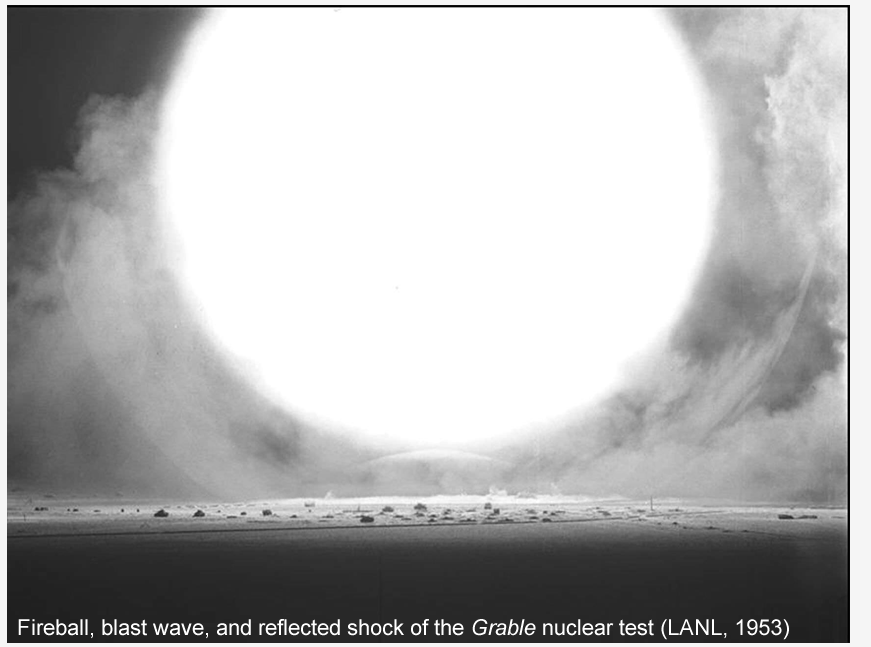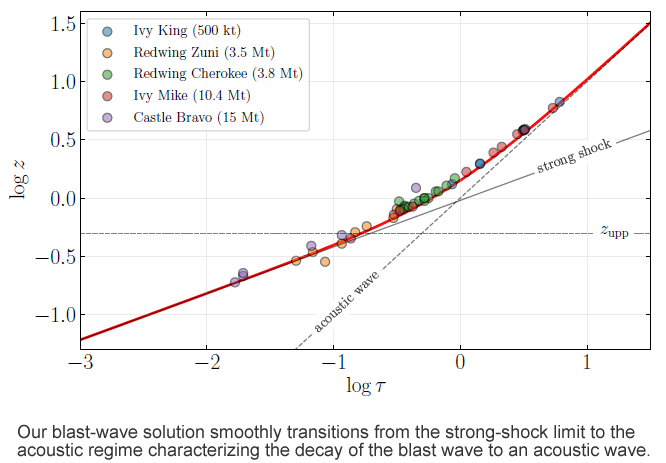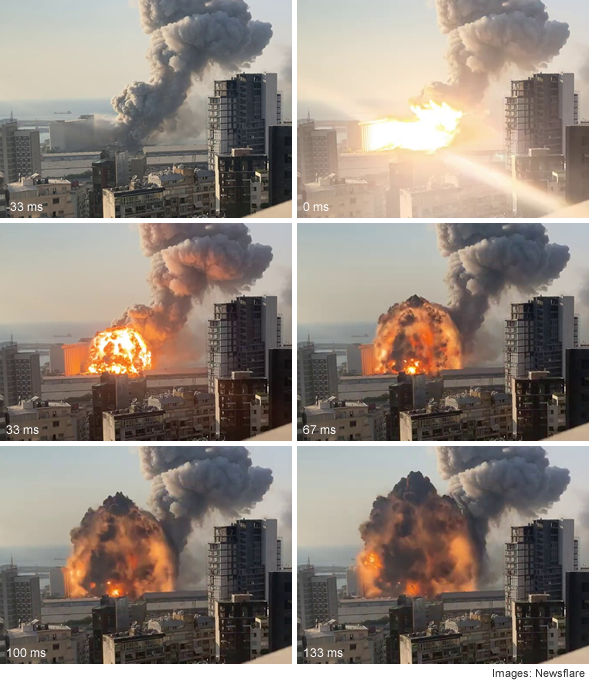Projects
Physics of explosions
 Using
standard theoretical tools and a simple ansatz for solving the
hydrodynamics equations, a general expression for the Mach number of
the shock front of a blast wave is derived. Dimensionless
coordinates are introduced allowing a straightforward visualization
and direct comparison of blast waves produced by a variety of
explosions, including chemical, nuclear, and laser-induced plasmas.
The results are validated by determining the yield of a wide range
of explosions, using data from gram-size charges to thermonuclear
tests.
Using
standard theoretical tools and a simple ansatz for solving the
hydrodynamics equations, a general expression for the Mach number of
the shock front of a blast wave is derived. Dimensionless
coordinates are introduced allowing a straightforward visualization
and direct comparison of blast waves produced by a variety of
explosions, including chemical, nuclear, and laser-induced plasmas.
The results are validated by determining the yield of a wide range
of explosions, using data from gram-size charges to thermonuclear
tests.
A simple formula for the Mach number of the front of a blast wave produced by an explosion in air was derived in the form of an ordinary differential equation, whose solution describes the position versus time development of the shock front. Time of arrival measurements can be used for estimating the energy E0 producing the shock wave, a crucial parameter that determines the shock evolution and the loading developed on obstacles with which it interacts. The general solution found contains the well-known strong-shock solution as a limit in the early stage of the shock development, beyond this regime the solution describes the transition to an acoustic wave in the far-field. In the near field the solution is only valid for nuclear explosions because a point source was assumed.
 Experimental
data from gram-sized charges was used verify the validity of the
results and later declassified data from large-scale explosions was
also employed using dimensionless coordinates for time and distance
so that explosions from grams of PE4 to thermonuclear blasts can be
visualized in a single diagram. The solution found serves as a
generalization of other descriptions of the decaying blast wave, in
this case, valid from the early (strong) stage to the asymptotically
acoustic behavior at the far field.
Experimental
data from gram-sized charges was used verify the validity of the
results and later declassified data from large-scale explosions was
also employed using dimensionless coordinates for time and distance
so that explosions from grams of PE4 to thermonuclear blasts can be
visualized in a single diagram. The solution found serves as a
generalization of other descriptions of the decaying blast wave, in
this case, valid from the early (strong) stage to the asymptotically
acoustic behavior at the far field.
The theory and validation using archival data
has been published as Blast wave kinematics: theory,
experiments, and applications, Shock Waves
(2022)
Physics of the Beirut explosion
 On August 4, 2020 a devastating explosion occurred
at the port of Lebanon’s capital Beirut. Using
On August 4, 2020 a devastating explosion occurred
at the port of Lebanon’s capital Beirut. Using
videos from social media and
basic image processing,
I studied the growth of the fireball as a function br />
of time to
estimate the explosive yield of the
explosion. Using the Sedov-Taylor-von Neumann relation
for the early
stage of a blast wave,
the data imply the release of 2.3 TJ, equivalent over half a kiloton
of TNT.